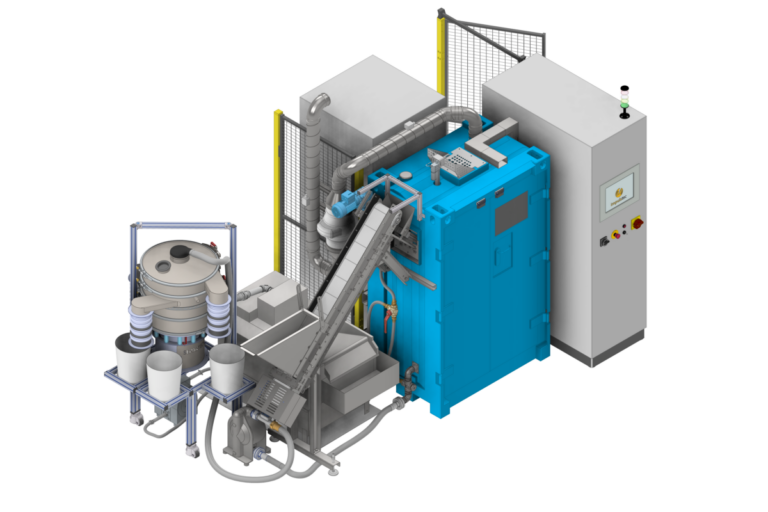An international research team has developed a new machine that uses shock waves to separate the different materials from a PV module. Chemical processes can be further used to extract silicon and silver. Results show the recovery of more than 99.5% of the original weight of the panels.
Researchers from the AGH University of Krakow from Poland and Solar Energy Research Institute of Singapore (Seris) from Singapore have developed a new method for recycling crystalline silicon PV panels. Their findings show that the technology makes the electrohydraulic shock gull fragmentation (EHF) the recovery of more than 99.5% of the weight of the panels, almost complete recycling.
“This research was carried out at two locations,” said the corresponding author Professor Pradepep Padhamnath PV -Magazine. “The EHF machine is in Seris, Singapore, where the disintegration of the modules was performed. The analysis of the products and the further development of the recycling process was carried out at AGH University of Krakow.”
The EHF machine is based on shock waves generated by bowing between electric electrodes that are suspended in a liquid medium. In this case, electric electrodes are connected to a power supply of approximately 50 kV, which generates shock waves in water while interacting with the chopped PV module that is immersed in the liquid. Before that happens, the aluminum (already) frame, the external connection box and the threads are removed by mechanical separation and the module is cut with a water jet.
The processes
After the disintegration in the fragmentation unit, individual materials such as glass, backheet, ethylene vinylacetate (EVA), copper (CU) ribbons and solar cells are separated by filtration, sorting and incorporation while passing through different heads. The materials can then be used to extract silicon (SI) and silver (AG) through electric chemical processes, while the glass, CU/AL/AG contacts can be reused after purification and melts.
The group tested the technology on three different panel types, namely glass backsheet, glass glass and glass -free panels. They were all created in -house without working cells in a process that is comparable to the process in which working panels are made. Glass glass panels had a layer of glass on both sides, with an EVA on Copolymer -based layer as the Encapsulant. Glass backsheet panels had glass on the front and polyethylene terephalate (PET) at the back, with Eva as the Encapsulant. Glass -free panels had pets -based transparent front sheets on the front and opaque rear shoes on the back with EVA as the encapsulating.
All panels were cut into pieces of 2.5 x 2.5 cm or 5 x 5 cm and were inserted into the EHF respectively. After that, recovered products were small pieces of glass (1-5 mm), coarse powder (more than 250 μm) and fine powder (less than 250 μm) that mainly contain SI, all and AG. “The fine, small size of the particles makes rapid chemical reactions possible as a result of the improved surface and could therefore improve process transition in industrial applications,” the academics explains.
To recover, the powder was treated with sodium hydroxide (NaOH); While nitric acid (HNO3) was used to restore AG. Hydrofluoric acid (HF) was used to restore SI, creating silicon tetrafluoride (SIF4) as a by -product. “The SIF4 gas is of commercial importance and has several applications in the semiconductor and chemical industry. With this process, the gas can be recovered and stored for future use on this point,” the team has marked.
In addition, the glass pieces were treated with potassium hydroxide (KOH) to separate the Eve and PET. “A significant advantage of this process is the recovery of the different polymers used in the PV panel, such as Eva and Polymerbacksheet, which can be recycled,” concluded the team. “In pyrolysis process these polymers are burned and lost, which generates toxic fumes in the process. That is why this process offers a cleaner and less energy -intensive alternative to restore materials from the PV panels that lead to almost complete circularity.”
The new recycling technology was presented in “Development of the PV panel recycling process that makes complete recyclability of silicon photovoltaic panels possible“Published in Solar energy materials and solar cells.
This content is protected by copyright and may not be reused. If you want to work with us and reuse part of our content, please contact: editors@pv-magazine.com.


